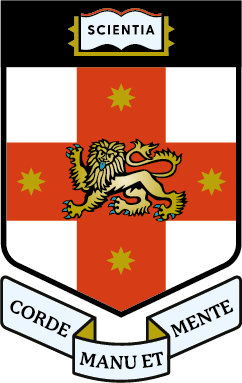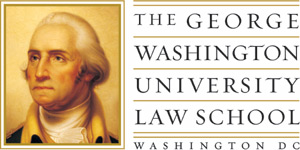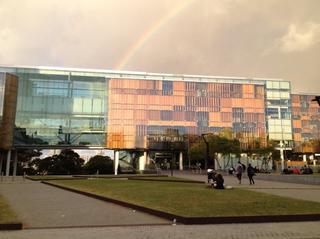
The University of New South Wales (UNSW), also known as UNSW Sydney, is a public research university based in Sydney, New South Wales, Australia. It is one of the founding members of Group of Eight, a coalition of Australian research-intensive universities.

Legal education is the education of individuals in the principles, practices, and theory of law. It may be undertaken for several reasons, including to provide the knowledge and skills necessary for admission to legal practice in a particular jurisdiction, to provide a greater breadth of knowledge to those working in other professions such as politics or business, to provide current lawyers with advanced training or greater specialisation, or to update lawyers on recent developments in the law.
The University of Toronto Faculty of Law is the law school of the University of Toronto. Maclean's has consistently assessed the Faculty as the highest ranked common law school in Canada and the highest ranked in terms of faculty journal citations. The Faculty offers the JD, LLM, SJD, MSL, and GPLLM degrees in law.

National Law School of India University (NLSIU), or simply the National Law School(NLS), is a public law school in Bangalore, India. The school is one of the leading law schools in India, consistently ranked #1 in the National Institutional Ranking Framework for law.

The University of Michigan Law School is the law school of the University of Michigan, a public research university in Ann Arbor, Michigan. Founded in 1859, the school offers Master of Laws (LLM), Master of Comparative Law (MCL), Juris Doctor (JD), and Doctor of the Science of Law (SJD) degree programs.

The Benjamin N. Cardozo School of Law is the law school of Yeshiva University in New York City. Founded in 1976 and now located on Fifth Avenue near Union Square in Lower Manhattan, the school is named for Supreme Court Justice Benjamin N. Cardozo. Cardozo graduated its first class in 1979. An LL.M. program was established in 1998. Cardozo is nondenominational and has a secular curriculum, in contrast to some of Yeshiva University's undergraduate programs. Around 320 students begin the J.D. program per year, of whom about 57% are women. In addition, there are about 60–70 LL.M. students each year.

The George Washington University Law School is the law school of George Washington University, in Washington, D.C. Established in 1865, GW Law is the oldest law school in the national capital. GW Law has 275 elective courses in business and finance law, environmental law, government procurement law, intellectual property law, international comparative law, litigation and dispute resolution, and national security and U.S. foreign relations law.
The Catholic University of America Columbus School of Law is the law school of the Catholic University of America, a private Roman Catholic research university in Washington, D.C., United States.

The University of Alberta Faculty of Law is the graduate school of law of the University of Alberta in Edmonton, Alberta, Canada. Established as an undergraduate faculty in 1912 it is the third oldest law school in Canada, and often considered the oldest law school in Western Canada.
Monash University Faculty of Law, or Monash Law School, is the law school of Monash University. Founded in 1964, it is based in Melbourne, Victoria and has campuses in Malaysia and Italy. It is consistently ranked as one of the top law schools in Australia and globally, and entry to its Bachelor of Laws (LLB) programme is highly competitive.

Melbourne Law School is one of the professional graduate schools of the University of Melbourne. Located in Carlton, Victoria, Melbourne Law School is Australia's oldest law school, and offers J.D., LL.M, Ph.D, and LL.D degrees. In 2021–22, THE World University Rankings ranked the law school as 5th best in the world and first both in Australia and Asia-Pacific.

Sydney Law School is the law school at the University of Sydney, Australia's oldest university. Sydney Law School began a full program of legal instruction in 1890 following the appointment of its first dean, having offered legal examinations since 1855.
The Chinese University of Hong Kong Faculty of Law is a law school in Hong Kong.

The University of Ottawa Faculty of Law is the law school at the University of Ottawa, located in Ottawa, Ontario, Canada. Established in 1953, the faculty is today divided into Civil Law and Common Law sections, the two formally recognized legal traditions in Canada.

The University of Manitoba, Faculty of Law is the law school located in Winnipeg, Manitoba, Canada. It is on the university's Fort Garry campus. The Faculty is located within the Robson Hall building, named after one of the two founders of the law school, Hugh Amos Robson.

The Faculty of Law is a faculty of the University of Windsor in Windsor, Ontario, Canada. The first class of students matriculated in 1968, and the current building was opened in 1970. The Faculty has grown immensely over the past 50 years, increasing its national profile through its innovations in research and from thousands of alumni across Canada and the world. The 2017 endowment to the Faculty of Law was $10.2 million. The Faculty is also the current academic host institution of the Canadian Bar Review (CBR), the most frequently cited journal by the Supreme Court of Canada.

The ANU College of Law is the law school at the Australian National University and one of the seven academic Colleges of the ANU. It is located in Canberra, the capital of Australia. This provides the College with opportunities to connect with the work of the Parliament of Australia, the High Court of Australia, the departments and agencies of the Federal Government, as well as the local ACT law-making institutions – the Legislative Assembly and the ACT courts.

National University of Study and Research in Law (NUSRL) is a National Law University located in Ranchi, Jharkhand, India. It was established by a legislative act, by the State of Jharkhand as the fourteenth National Law University of India. The statute provides for the Chief Justice of India or a Senior Supreme Court Judge to serve as the Visitor of the university.

The Yong Pung How School of Law is one of the six schools of the Singapore Management University. It was set up as Singapore's second law school in 2007, 50 years after the NUS Faculty of Law and 10 years before SUSS School of Law. Prior to its establishment as a law school, the school was a department within the School of Business between 2000 and 2007. The school was known as the SMU School of Law until 2021, when it was renamed after former Chief Justice Yong Pung How.


















